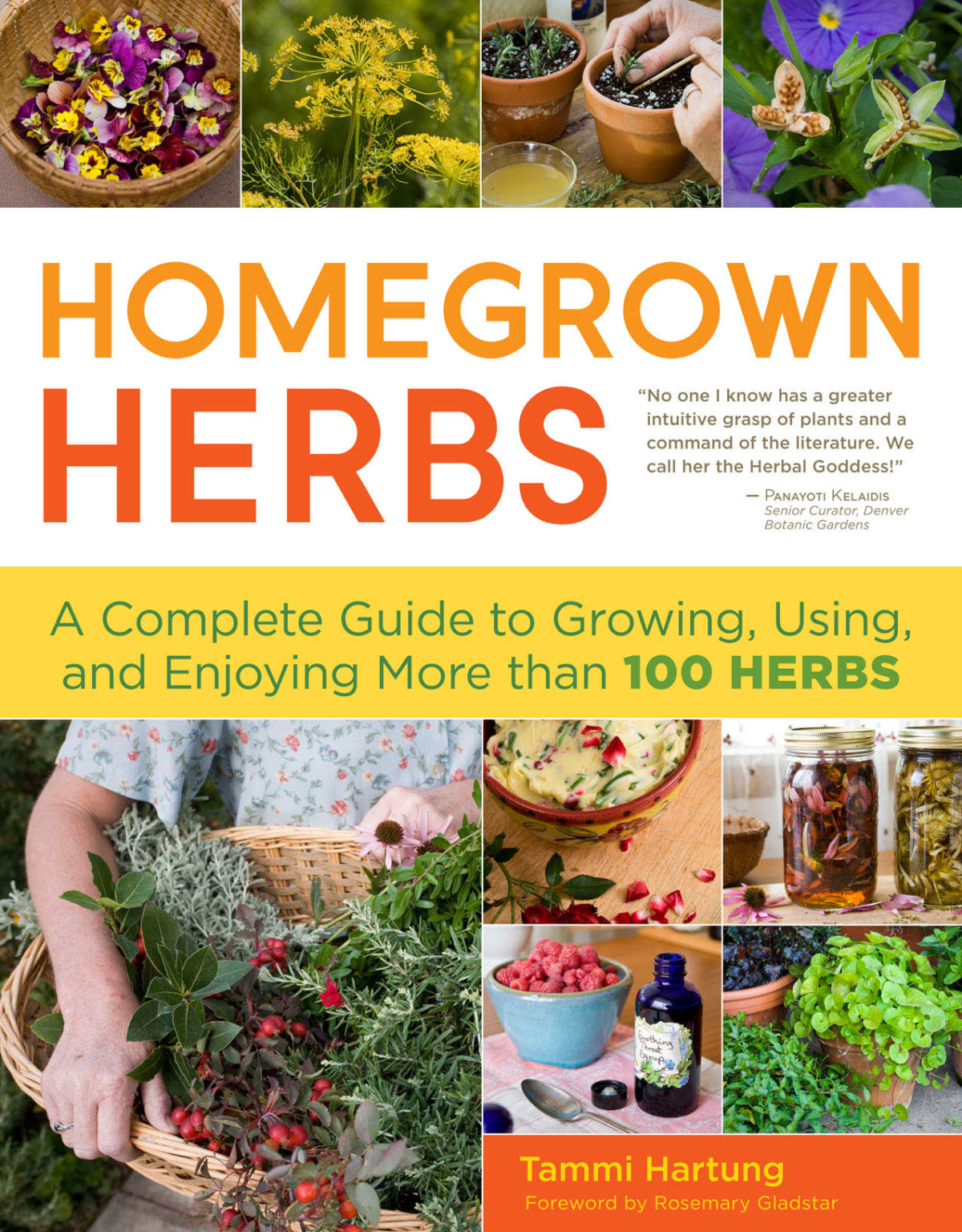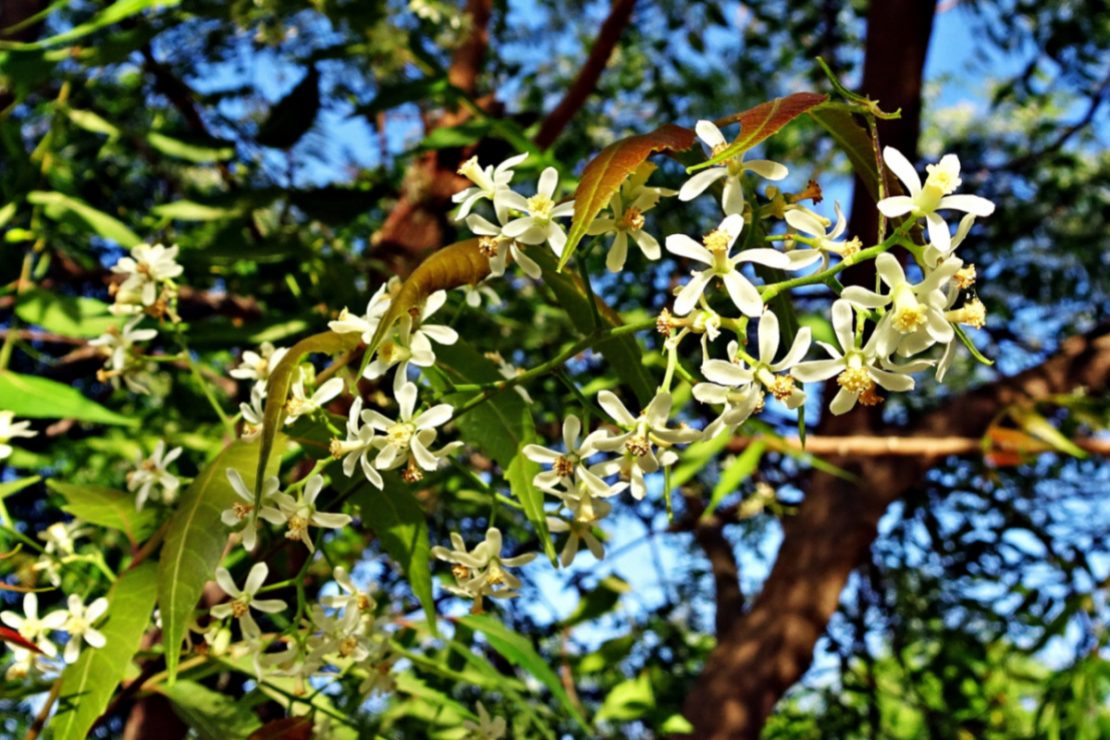
All-Natural Pest Control Treatments
This excerpt is from Tammi Hartung’s book Homegrown Herbs and is reprinted with permission from the publisher.
There are numerous methods for controlling insect pests in the garden, field, or greenhouse. Prevention will always be your best approach, but if that fails, consider beneficial insects or nonchemical pest controls. Do your best to address problems when they begin; controlling pests at this point will be much easier and less expensive, and will require less time and energy.
Monitor your garden or greenhouse regularly to stay in touch with pest populations. If you’re careful, you should be able to keep small problems from getting out of hand. It’s a simple step toward keeping the garden healthy.
Monitoring Sticky Cards
You can purchase monitoring cards, sometimes called yellow sticky cards, to use as both a tracking tool and a trapping control method for insect pests. The cards are a bright, sunny yellow and are covered with a sticky substance that attracts and traps insects. Count the insects once a week and determine appropriate control methods based on which pests are causing problems. Because the cards actually trap insects, they are themselves a method of control.
When you use sticky cards, there are a few things to keep in mind. First, always place the cards in the foliage area of the plants (don’t place them high above plants; not all pests are flying insects). Second, put them in the same place in the garden from one week to the next. This will help you get an accurate picture of how well you are maintaining insect populations. Third, use a magnifying glass when looking at the cards, so that you can properly identify the insects. Keep a log of how many of each insect you see on each card from week to week: This gives you a tracking record and establishes whether any patterns exist.
Purchase sticky cards at a garden center or make your own. Here’s how: Buy a package of bright yellow (insects are attracted to yellow) plastic picnic plates. Make a mixture of equal parts vegetable oil and honey. Smear a thin layer over the plates, front and back. Hang from a string, or clip with a clothespin to a wooden stake in the garden. Once a week, look at the plates and count the insects stuck to them. Then wash the plates, let them dry, and reapply the sticky goo, and you’re set to begin a new week of bug catching.
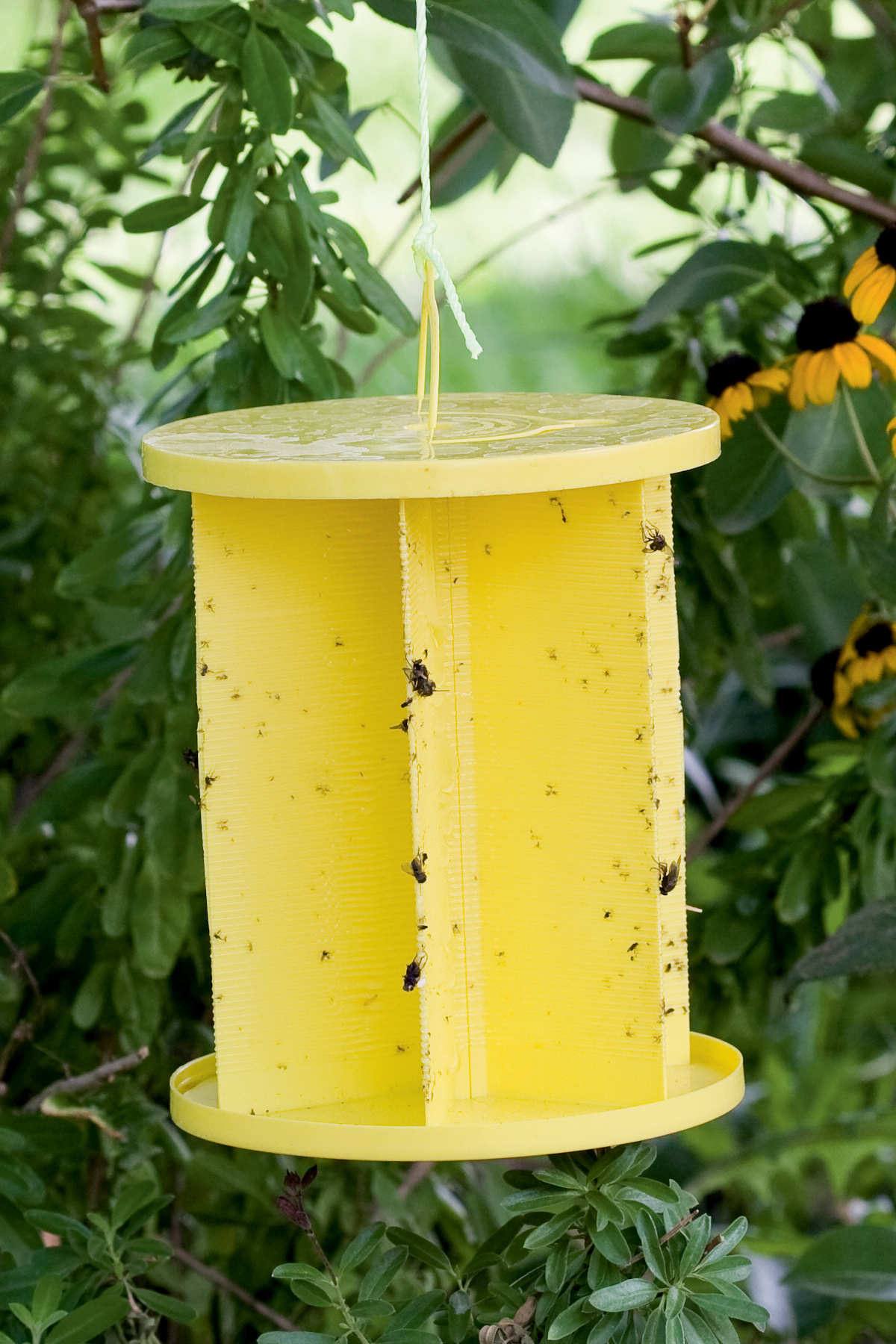
Sticky cards are good for monitoring pest insect populations and as a tool for trapping pest insects, many of which are attracted to the yellow color.
Bug Juice
Many pests, especially beetles, will not feed on plants if they smell the dead of their own species. This preparation works especially well for Colorado potato beetles, Mexican bean beetles, and cabbage loopers. If there are virus-infected plants nearby, do not use this method; there is the potential of spreading viruses to healthy plants from the bodies of insects that fed on the affected plants.
1 cup pest bugs
3–4 cups water
1. Grind the pest bugs in an old blender. Note: Don’t use the kitchen blender — go to a secondhand shop and purchase one to use just for preparing garden remedies.
2. Add enough water to get the ground insects to the consistency of milk. Strain the bug juice before putting it in the sprayer.
3. To use, spray the plants, covering all the surfaces. This should help repel similar pests from those plants for 3–4 weeks. Reapply in a month if necessary.
Soap Spray
This broad-spectrum control method is used to treat spider mites, aphids, earwigs, whiteflies, mealybugs, thrips, and scale. It may also be helpful against ticks, beetles, and caterpillars. The spray works by both repelling insects and suffocating any that are already on the plants. It is just as effective as commercial insecticidal soap products that are available from your garden store. If you choose to purchase a soap spray, follow the label directions to prepare and apply.
1 quart water
1–2 teaspoons dishwashing liquid
1. Put the water in a large spray bottle and add the dishwashing liquid; shake to mix.
2. To use, spray over the entire plant, coating the surfaces well. Repeat every 5–7 days, as necessary, until pests are controlled.
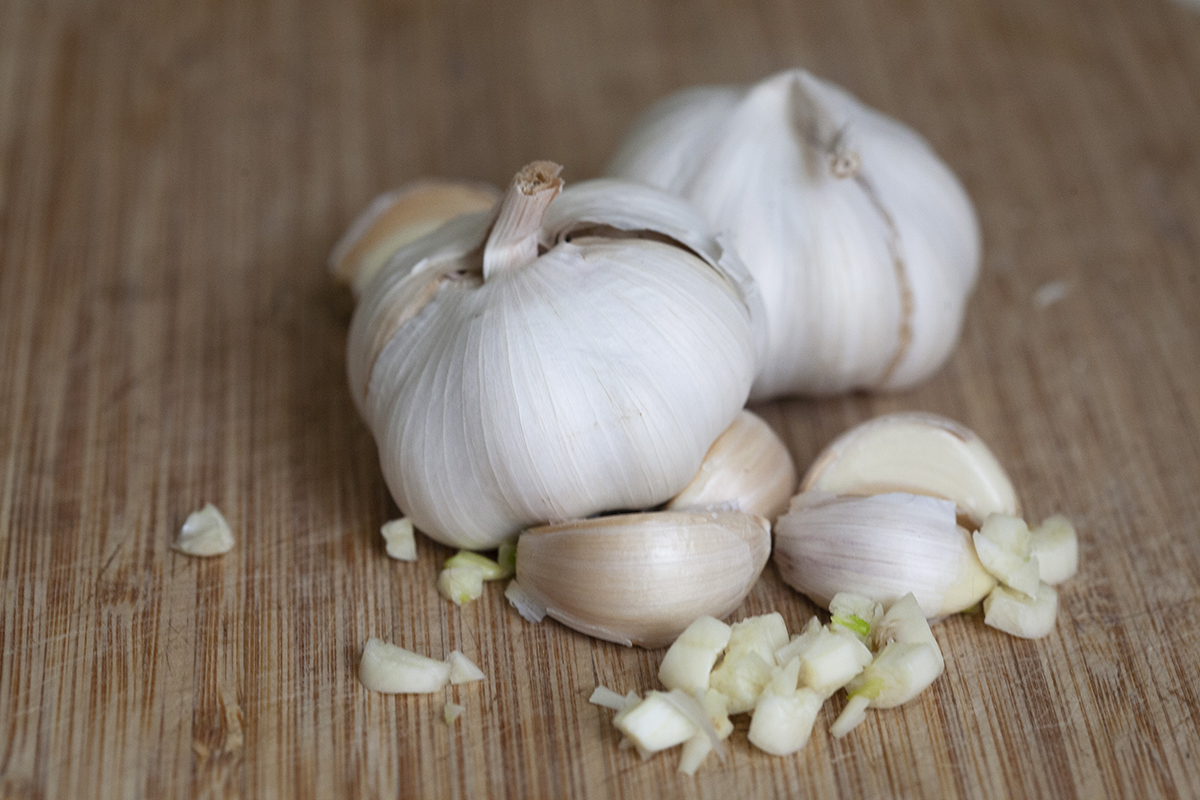
Garlic Oil
Most pests hate garlic, so this is an excellent control method. It’s especially effective against aphids, whiteflies, spider mites, leafhoppers, squash bugs, and young grasshoppers. It’s important to use mineral oil in this recipe, as it will not be absorbed by a plant.
Note: Some plants are sensitive to this spray, so do a test patch first. Spray one or two plants with the garlic oil. If the leaves turn yellow or brown within 24 hours, do not use the spray on that particular type of plant. If no burning occurs, go ahead and spray the remaining plants. This spray is best used around dusk; the oil content can provoke a “sunburn” reaction when the sun is hot.
6–8 cloves garlic, peeled and finely chopped
1 tablespoon mineral oil
1 pint water
1 teaspoon dishwashing liquid
1. Place the garlic in a clean glass jar and pour the mineral oil over it. Tightly cap the jar, then store at room temperature for 24 hours.
2. Line a strainer with a piece of cloth and then pour the oil mixture through it. Gather up the cloth and squeeze the remaining oil from the garlic. Discard the pieces of garlic and reserve the garlic-infused oil.
3. Combine the water and the dishwashing liquid.
4. To use, mix 1–2 tablespoons of the infused oil in a pint of the water-dishwashing liquid solution in a spray bottle or mister. Spray plant thoroughly.
Ant Bait
This bait will attract ants of all kinds. Use it with caution around small children and animals, and do not inhale the dust when mixing. Mark the label with a skull and crossbones; it is poisonous. Be careful not to spill ant bait near the base of plants, as it will damage or kill the plants’ roots.
3 cups water
1 cup sugar
3 teaspoons boric acid
Cotton balls
1. Combine the water, sugar, and boric acid and blend well.
2. Fill each of three glass jars halfway with cotton balls. Pour 1 cup of the mixture into each jar and cover tightly. Punch small holes in the lids and label the jars clearly.
3. Lay the jars in the garden where ants are a problem. The ants will carry the mixture back to the anthill and it will destroy the colony. Replace the bait every 1–2 weeks, as needed, until ants are no longer a problem.
Natural and Homemade Organic Pest Control Preparations
There are several all-natural pest-control preparations on the market, and you can certainly make some of your own. Remember that these are still pesticides, even though they aren’t made from synthetic chemicals; they can be very toxic and should be used and stored appropriately.
Wear protective clothing (long sleeves and pants), waterproof boots and gloves, and serious eye protection when applying any type of pesticide. If you are using a sprayer, learn ahead of time how it works so you can apply any preparation safely and effectively. Do not apply anywhere close to children’s or pets’ play spaces, or water such as ponds and streams.
Read label instructions carefully before you begin to apply a substance, and never store it where children or pets can reach it, in open containers, or in containers that are not fully labeled. If you make the preparation yourself, you must label it completely with the preparation name and every single ingredient used. Also clearly mark containers with cautionary information if appropriate. Wait at least 24 hours before using a sprayed herb for any purpose.
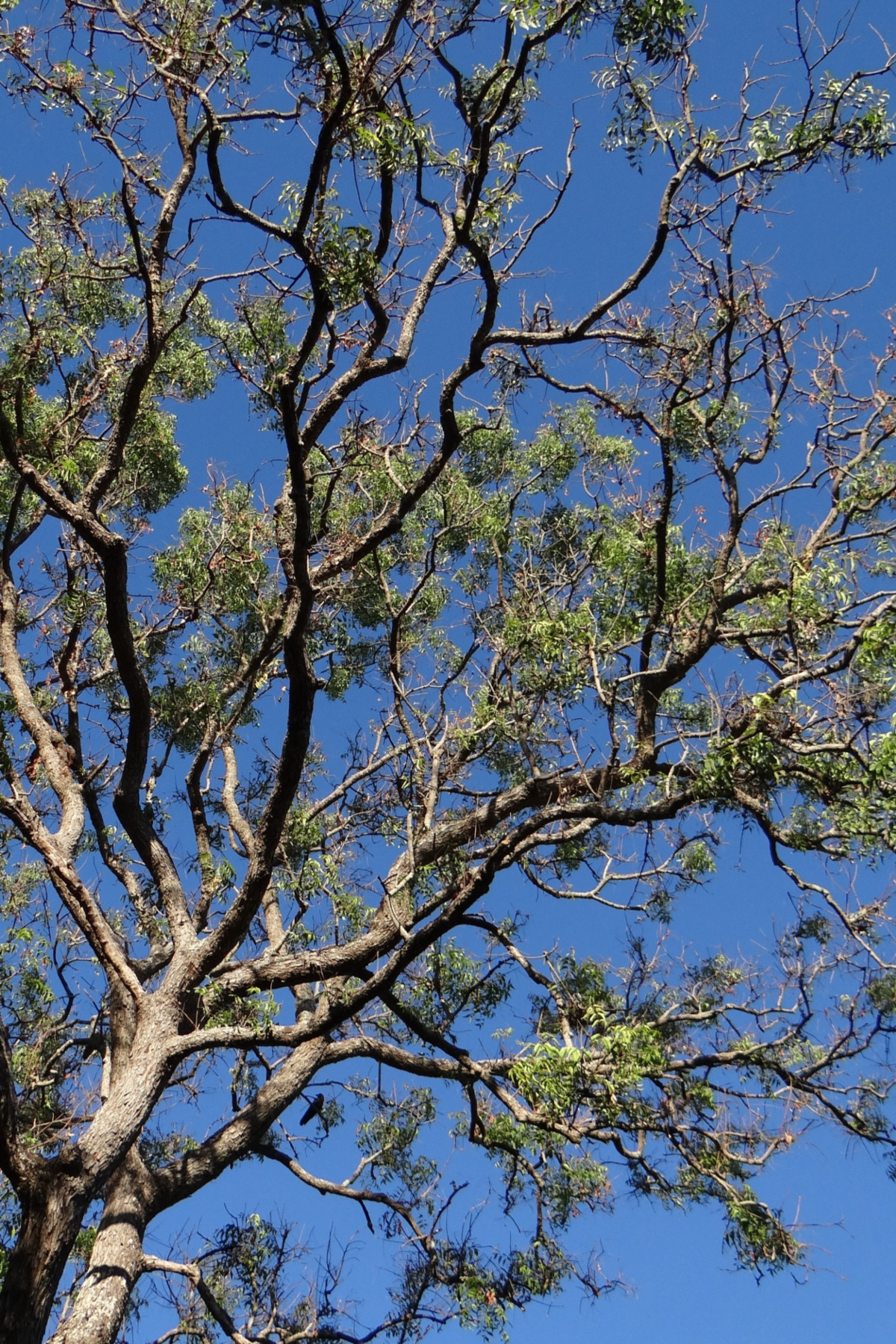
Neem Tree Extract
Neem tree extract works in a number of ways: It kills some insects, acts as a growth regulator in others, and repels still others (they seem to dislike the taste). We use the brand NeemX, as it meets certified organic standards, and have found it to be very effective against beetles of many types, whiteflies, aphids, spider mites, thrips, leaf miners, mealybugs, and grasshoppers.
Use neem tree extract according to the manufacturer’s directions. Generally, you spray it onto plants that are being eaten or otherwise damaged by certain pests. It acts in some capacity as a repellent, but when bugs ingest it, it will poison young, weak, or sick insects. If healthy insects ingest the extract, it disrupts their reproductive system and they are unable to reproduce.
Neem applied as a soil drench has a systemic effect on plants: Each plant draws up the neem into its leaves and stems, thus affecting the pest when it eats the plant. Neem may be toxic to some beneficial insects as well, but it does not seem to bother honeybees or spiders. Neem is not toxic to people or animals, and it is biodegradable.
Nolo Bait
This is a biological suppression bait for use on grasshoppers, locusts, and some species of crickets. Unlike chemical-based insecticides, Nolo Bait contains a naturally occurring spore, called Nosema locustae, that infects these insects. It is not toxic to humans, livestock, wild animals, birds, fish, or life-forms other than grasshoppers and closely related insects.
The spore is injected into wheat bran, which grasshoppers like to eat. Most pest species of grasshoppers, particularly younger instars, will eat the bran; the resulting infection helps to control grasshopper populations without adverse effects on the environment. Depending on age and species, a grasshopper that eats even one flake of Nolo Bait can become infected. When sick, the insect eats less and less. Other grasshoppers often cannibalize the sick ones and thus become infected as well, spreading the disease among the population. In addition, infected females can pass the disease through their eggs, thus helping to control future generations.
Nolo Bait does not work rapidly, however. According to the Colorado State University Extension Service, the age and quantity of the insects influence how quickly you’ll see results. Follow-up applications each year that grasshopper populations are on the rise will help manage the problem. Grasshoppers migrate over great distances; it is best to spread Nolo Bait where you need it frequently during the growing season. Ask the neighbors if they would like to participate; this will also improve your success rate.
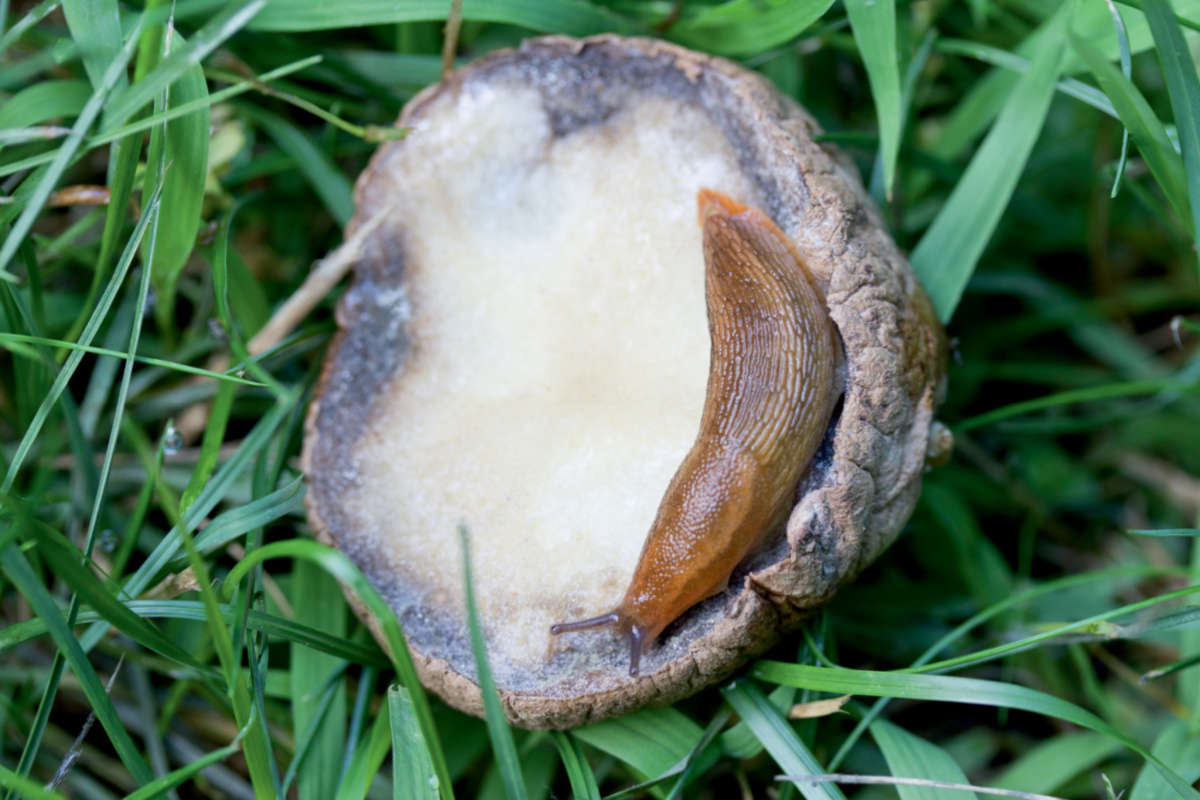
Slug and Snail Bait
Although I know many methods to control slugs and snails, the one that works really well for us is potato. Just before dark, place large slices of raw potato on the ground where slugs are a problem. Slugs love these spud feasts and will munch happily all night long.
The downside of this method is that you must get up very early the next morning, just as traces of light appear. Gather up the potato slices into a box or can. They should be loaded with slugs (you may want to wear a pair of gloves if touching slimy slugs bothers you). Discard the “slug hotels” in the trash. Do this every day until you are no longer noticing slug-related damage. If you don’t check the potatoes early enough in the morning, the slugs will have retreated back into the soil — and your plant roots — for the day. If you prefer not to kill the slugs, make sure you transport them at least 200 feet (60 m) from the garden; slugs can travel quite a distance.
You can also purchase pelletized slug bait and sprinkle it on the greenhouse floor or on the soil in the garden wherever slugs and snails have become a problem (follow the directions on the package). The pellets work well, and are just the ticket for people who don’t want to get up at the crack of dawn to deal with slug-coated potato slices.
Excerpted from Homegrown Herbs © by Tammi Hartung. Used with permission from Storey Publishing.
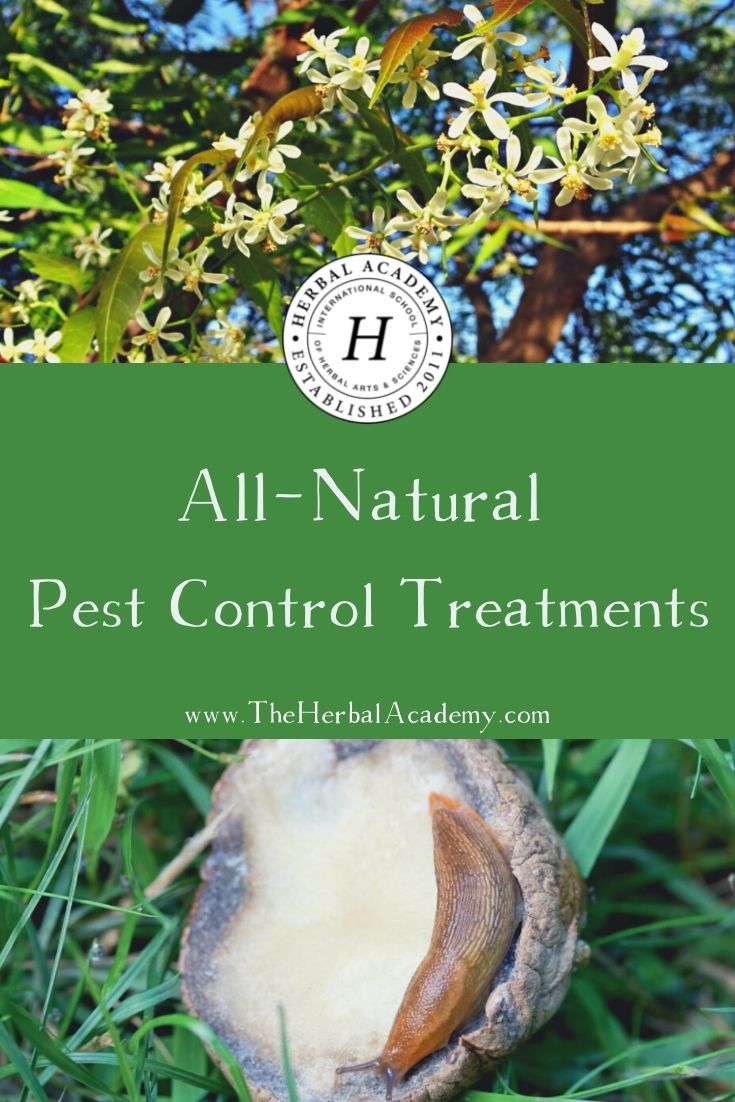
For other garden tips see:
4 Tips to Control Mint in the Garden
7 Best Plants for a Beginner’s Herb Garden

